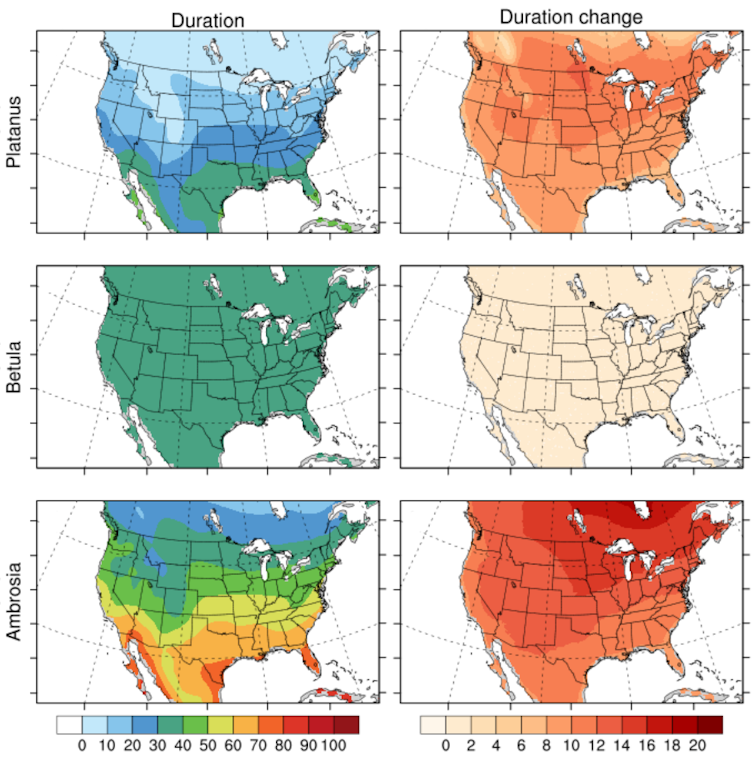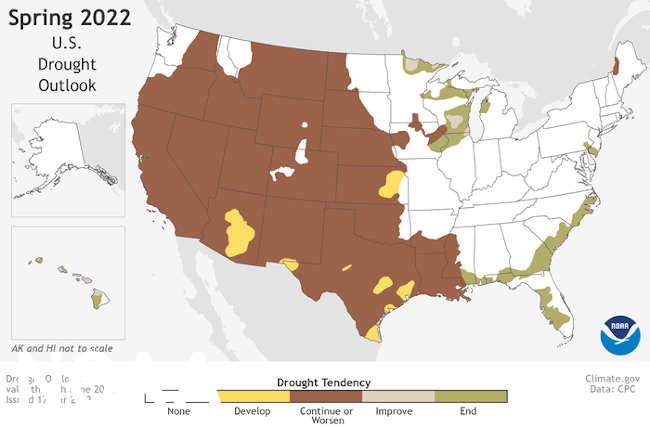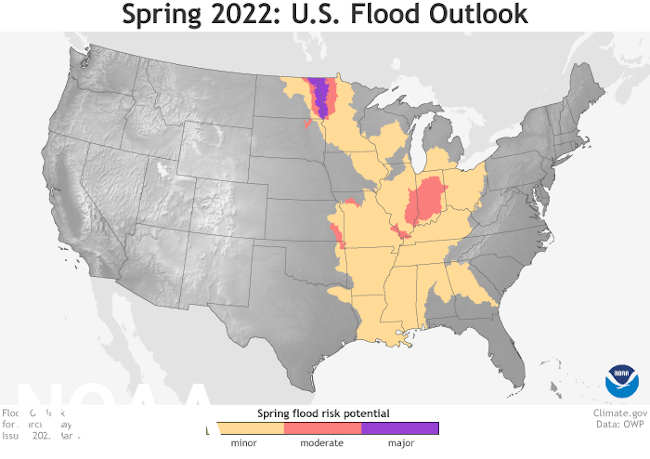- KRISTIN KERNS-D’AMORE, JOEY MARSHALL AND BRIAN MCKENZIE
- Posted On
U.S. migration continued to decline from 2020 to 2021; pandemic did not disrupt decline in rate of people moving

The COVID-19 pandemic did not stop a decline in the nation’s mover rate which in 2021 was at a new historical low over more than seven decades, according to the Current Population Survey Annual Social and Economic Supplement (CPS ASEC). The 2021 mover rate was less than half what it was in 1948.
In 2021, 8.4% of people lived in a different residence one year ago, down from 9.3% in 2020.
In the CPS ASEC, migration is measured as having a different residence one year prior to being interviewed from February to April. For example, 2021 CPS ASEC migration estimates captured people who changed residences from early 2020 to early 2021.
The 2020 and 2021 CPS ASEC migration estimates reflect different time periods relative to the COVID-19 pandemic. In the 2021 data, most possible moving days occurred during the pandemic, while in the 2020 data, most possible moving days occurred before the pandemic.
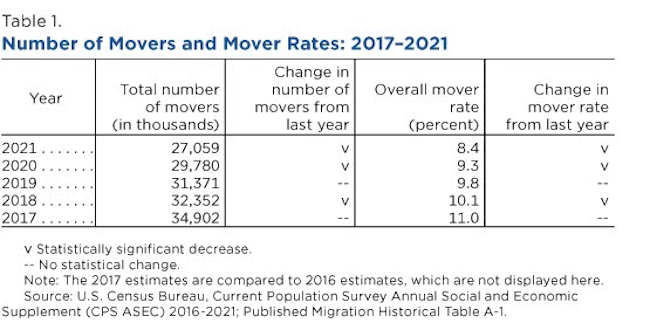
Moving slowdown
A falling mover rate is nothing new, and the pandemic did not disrupt this decline.
Over the past five years, both the annual mover rate and number of movers fell (from the previous year) in 2018, 2020, and 2021. (Neither the mover rate nor the number of movers changed statistically in 2017 or 2019). The number of movers declined in 2018, 2020, and 2021 despite continued U.S. population growth.
The 2021 mover rate decline is even more dramatic when compared to what it was more than seven decades ago.
In 1948, the first year the CPS collected this information, the mover rate was 20.2%, more than twice the 2021 mover rate (8.4%). The 2021 mover rate was lower than all prior mover rates from 1948 to 2020, marking a new historical low.

Aspects of migration stable between 2017 and 2021
Even as the mover rate declined in recent years, other aspects of migration remained relatively stable, including types of moves, the main reason for moving and migration between regions.
In recent years, movers did not typically cross state or even county lines. In 2021, less than one-fifth moved from one state to another, while more than half moved within the same county. This was also the case in 2017 through 2020.
Nearly half of all movers in 2021 cited housing-related reasons for moving, which were also the most prevalent reasons given for moves from 2017 to 2021.
The next most prevalent reasons for moving in those years were family-related reasons, job-related reasons and, lastly, other reasons.
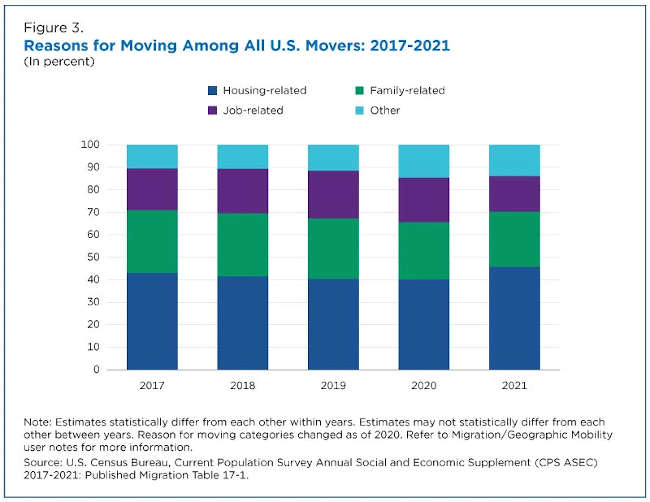
Moving across regions
Across the four regions, net population changes associated with migration did not happen consistently or in the same direction in recent years.
In 2021, the South gained people from migration between regions, about 253,000, while the Northeast lost people, about 227,000. The Midwest and West did not experience statistically significant gains or losses.
In addition, the South experienced net internal gains in 2018 through 2020, and the Northeast also experienced net internal losses in 2017 through 2020.
Including movers from abroad, the South experienced net gains each year from 2017 through 2021 and the Northeast experienced a net loss in 2021.
Changes in migration from 2020 to 2021
The pandemic did not disrupt a decline in the national mover rate but it may have affected migration in other ways.
The relative share of movers crossing state lines increased from 2020 to 2021. At the same time, the share of movers from abroad declined, which may be related to international travel restrictions during the pandemic.
The relative share of movers indicating housing-related reasons increased from 2020 to 2021. At the same time, the share moving for job-related reasons declined, which may be linked to economic and workplace disruptions during the pandemic.

About the CPS ASEC migration estimates
The CPS ASEC migration estimates are among persons at least one year of age and living in the United States (50 states and District of Columbia). Movers from Puerto Rico and the U.S. Island Areas are counted as movers from abroad. As of 2020, there were changes to the survey’s reason for moving categories.
COVID-19-related changes to survey operations and nonresponse may have influenced 2020 and 2021 estimates.
More CPS ASEC migration estimates are available in our historical tables, historical graphs and annual detailed tables.
Definitions and more information about confidentiality protection, sampling error, and nonsampling error are available on the full CPS ASEC Technical Documentation page.
Kristin Kerns-D’Amore is a survey statistician in the Census Bureau’s Social, Economic, and Housing Statistics Division. Joey Marshall is a survey statistician in the Census Bureau’s Center for Economic Studies. Brian McKenzie is a branch chief in the Social, Economic, and Housing Statistics Division.




























